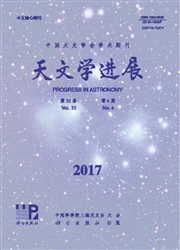

 中文摘要:
中文摘要:
介绍了GNSS定位中常用的三种对流层映射函数NMF、GMF、VMF1和一种新的模型——GPT2,通过测站气压、天顶静力学延迟分量以及投影函数参数三个方面对这几个模型进行了比较。采用不同的模型对全球均匀分布的30个IGS测站2012年全年的GPS观测数据进行精密单点定位,分析了不同模型解算的测站坐标与对流层天顶延迟精度。分析结果表明:以实测气压为基准,VMF1模型气压误差仅为0.4%,GPT2模型相对于GPT模型改善了约25%;以VMF1 HT模型为基准,GPT和GPT2模型天顶静力学延迟中误差约为1 cm,GPT2模型精度略优于GPT模型;以VMF1网站发布的测站VMF1模型为基准,GPT2模型的干、湿映射函数参数ah、aw中误差约为1×10^-5和5×10^-5;在IGS08框架下,GMF/GPT与VMF1/GPT2模型的PPP坐标解精度比NMF提高了22%;两模型定位精度与ZTD精度都明显高于NMF模型。
 英文摘要:
英文摘要:
Three models frequently used within the IGS for tropospheric propagation delay estimation including NMF, GMF/GPT, VMF1, and the newly-developed model GPT2 are presented in this paper. These models are compared in two scenarios: pressure, hydrostatic zenith delay and mapping function coefficients from different models were compared directly;coordinates and tropospheric parameters from the Precise Point Position(PPP) solutions based on different models using 1 year data of 30 global distributed IGS stations were compared. Results show:(1) Compared to the measured true pressure, VMF1 is the most accurate modeling more than 99.6% of pressure and the accuracy of GPT2 is improved by25% over GPT;(2) Compared to the VMF1 HT model estimates, the RMS of hydrostatic zenith delay is 1 cm for both GPT and GPT2, and GPT2 is better than GPT;(3) Compared to the daily site VMF1 data, the RMS of mapping function coefficients ahand awof GPT2 are 1×10^-5and 5×10^-5, respectively;(4) Considering the coordinates from IGS08 frame as true values, estimated coordinates using GMF/GPT or VMF1/GPT2 have an improvement of 22% than NMF;(5) The PPP ZTD estimates using GMF/GPT and VMF1/GPT2 model are more accurate than NMF.
 同期刊论文项目
同期刊论文项目
 同项目期刊论文
同项目期刊论文
 Global characteristics of the second-order ionospheric delay error using inversion of electron densi
Global characteristics of the second-order ionospheric delay error using inversion of electron densi 期刊信息
期刊信息
